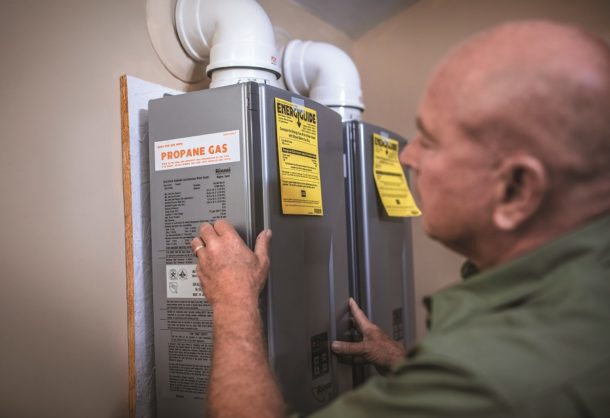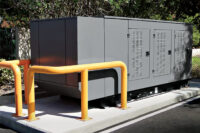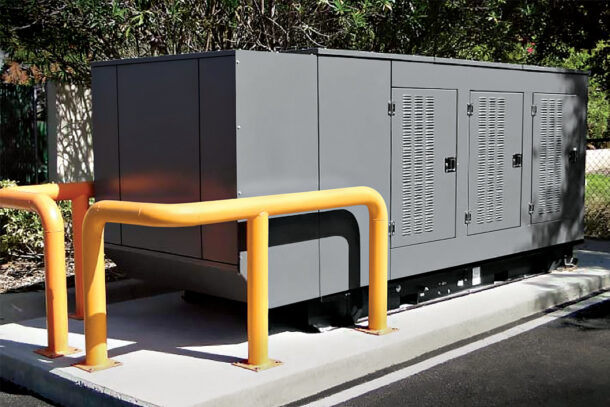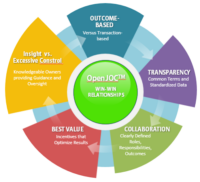We’re going to talk about a painful topic,” Callbacks”. I bet I just made the hair stand up on the back of your neck. After being a contractor for 23-plus years and speaking to contractors daily, one of the most proverbial pain points in owning a contracting business is callbacks. Callbacks can be highly frustrating Read more
Industry Blogs

We’re going to talk about a painful topic,” Callbacks”. I bet I just made the hair stand up on the back of your neck. After being a contractor for 23-plus years and speaking to contractors daily, one of the most proverbial pain points in owning a contracting business is callbacks. Callbacks can be highly frustrating, a waste of valuable time, increase technician turnover, very expensive for the company, and in some cases, the loss of a customer. Throughout this article, will talk about dissecting the cause, and I will give you four steps you can implement to reduce them.
If we break callbacks into four categories; human error, manufacturer defects, lack of training, and inadequate operations it will be much easier to identify a rationale to track them. We are all human and prone to make some mistakes and even the best manufacturers have some defective products that find their way to the wholesaler’s shelf. Training is one of the best areas to maximize your efforts as it improves technician confidence which customers will immediately notice when speaking to them. A company-wide training culture also creates validation that a tech fully understands the product “before” being asked to service or install products. Operations afford owners and managers to be transparent with their techs when an event occurs and how to prevent them from moving forward. Using technology can help mitigate callbacks by bringing consistent operations to the top of mind, customer communication, and customer specifics, when techs are in the field.

Human Error
Unless the mistake is repetitive, or constantly not following company operations, human error is a hard one to have a resolution for. Good coaching, knowing and interacting with your techs, and being transparent with technicians are some of the best procedures to help with human error. Look at the data and see if there is a pattern. Perhaps something is happening with that senior tech outside of work that is causing the errors at work. Tracking the errors by the technician and job type is a best practice to reduce them.
Manufacture Defects
Contractors attempting to get paid for a manufacturer defect is challenging. We all know most times if a product fails under the warranty period, it will replace the part but not pay for any of the labor. Even on a DOA (dead on arrival) issue, this policy stays true however, there are exceptions. The key takeaway for handling defective products is to track them. Tracking them gives you the availability to see trends and make adjustments to the product or manufacture. It’s also worth noting to differentiate between the product and the tech doing the work. Specifically, make sure it is the product and not an install or service procedure the tech is not doing correctly. Once you track how many manufacturing defects you see in the course of the year, then calculate and it should become a line item in your pricing structure as a cost of doing business. Yes, this is a normal expense item that is a cost to run a business. Large corporations operate this way as they know there will be mistakes and contracting is no different.
Operations
Constantly monitoring and adjusting your operations can play a role in reducing callbacks. There are numerous CRM’s that help automate tracking the data to make adjustments. Data like trends in a job type, what products were used, which tech did the work, and the amount of time the tech was on the call. Automation also helps to mitigate confusion between the customer, dispatcher, and the original call. Defining and adjusting operations that affect callback mitigation is key to reducing them company-wide. Be completely transparent with company procedures between the technicians and their manager as to what happens when there is a callback.
Training
Teachable and trainable moments on an individual and company-wide basis can be produced through callbacks. Decide if there is one tech or several techs on a given call type having callbacks. If it’s several techs on the same callback, bring them together and reinforce the training on the hows and whys and just as importantly track the outputs of the training efforts. Make the adjustments from the group to individualized training accordingly if the callbacks persist with one technician. If the callback is from an individual and it’s identified as a training issue, assign or implement the training and as an interim, use your CRM to prevent that tech from doing the call type until it is confirmed the tech thoroughly understands the original mistakes made. Providing, implementing, and tracking training for your tech is one guaranteed way to mitigate technical and operational mistakes that lead to callbacks. In the fast-paced business environment, numerous contractors don’t value training or implementation of activity at the level it should be. There are other, less expensive options available to contractors to use a training tool instead of traditional brick-and-mortar training models. Digital and virtual reality software is available at one-third the price per technician. This training can be done asynchronously and not affect workflows and scheduling. All of the metrics are available to track the progress of a technician’s performance against the training activity assigned to a technician and help with callback mitigation.
There you have it! Implement and or refine these four tactics in your business and you will start to reduce some of your callbacks. It should be noted that one of the impacts of a callback not mentioned in this writing is the financial impact and opportunity costs of a callback on the company’s bottom line. Look for a breakdown and explanation of that in future articles. Happy Contracting!
 Guest Blogger: Ken Midgett, has been in the plumbing and heating industry for over four decades. He has worked in every facet of the plumbing and heating industry. He has owned two successful PHCC businesses, is a licensed Master Plumber, a two-time national award-winning educator for plumbing and heating CTE classrooms, with a 100 percent placement into the industry for all eligible seniors from his program. Ken was noted throughout the CTE industry for the inclusion of non-traditional workers in his classroom, including young women. He has placed several of those young women in the workforce. Ken is passionate about the skilled trades and he continues to stay active in PHCCNA and PHCCPA. Ken is the current president of his local PHCCLV association. This role has allowed him to continue mentoring and coaching young apprentices in the field. He is currently employed at Interplay Learning as the Plumbing Market Director. You can follow Ken at www.linkedin.com/in/kenmidgett.
Guest Blogger: Ken Midgett, has been in the plumbing and heating industry for over four decades. He has worked in every facet of the plumbing and heating industry. He has owned two successful PHCC businesses, is a licensed Master Plumber, a two-time national award-winning educator for plumbing and heating CTE classrooms, with a 100 percent placement into the industry for all eligible seniors from his program. Ken was noted throughout the CTE industry for the inclusion of non-traditional workers in his classroom, including young women. He has placed several of those young women in the workforce. Ken is passionate about the skilled trades and he continues to stay active in PHCCNA and PHCCPA. Ken is the current president of his local PHCCLV association. This role has allowed him to continue mentoring and coaching young apprentices in the field. He is currently employed at Interplay Learning as the Plumbing Market Director. You can follow Ken at www.linkedin.com/in/kenmidgett.

Propane systems can help meet the growing demand for sustainable, energy-efficient homes Homeowner and homebuyer priorities are shifting. The majority of residential customers are seeking high-performance homes—specifically ones with reduced energy costs and lower environmental impacts, according to the Propane Education & Research Council (PERC). A study commissioned by PERC found that of the 2,200 Read more
Propane systems can help meet the growing demand for sustainable, energy-efficient homes
Homeowner and homebuyer priorities are shifting. The majority of residential customers are seeking high-performance homes—specifically ones with reduced energy costs and lower environmental impacts, according to the Propane Education & Research Council (PERC).
A study commissioned by PERC found that of the 2,200 U.S. residents surveyed, large percentages of people are willing to pay more for an energy efficient home – that’s81 percent of customers remodeling a home, 88 percent of customers buying a home, and 96 percent of customers building a home.
Customers often turn to construction professionals to help them select the right energy systems for their home. This creates a great opportunity for builders and contractors who are well-versed in energy-efficient systems to capitalize on this growing customer base.
Propane can provide a whole-home solution for these customers because propane appliances offer considerable advantages over other systems when it comes to efficiency, performance, sustainability, and dependability.

High-efficiency propane systems offer reduced annual energy costs
Propane is a versatile energy source, powering everything from space and water heating to clothes dryers and cooking equipment. Many of a home’s major systems perform better with propane as the energy source, so homeowners will enjoy greater comfort and lower energy bills compared with all-electric homes.
High-efficiency propane boilers provide energy, cost, space, and carbon savings in both new and existing homes. They offer the versatility to provide heating, hot water, and even snow melt. This versatility also extends to the heating delivery systems propane boilers serve, including hydronic baseboard systems, in-floor radiant systems, or even forced-air systems where the hot water from the boiler (instead of a furnace) is the heat source. Propane boilers are available in a wide range of heating capacities with inputs reaching as high as 299,000 BTU per hour. The ability of propane boilers to supply domestic hot water makes them ideal candidates for residential installations.
High-efficiency propane furnaces deliver significant value and a new level of comfort. They’re affordable, efficient, and environmentally friendly. A high-efficiency propane furnace is rated anywhere between 90 and 98 percent efficient, according to PERC. Over time, propane furnaces also maintain their efficiency better than systems like electric air source heat pumps.
Combining a propane furnace with other clean energy options, like a ground source heat pump (GSHP), provides your customers with added reliability and decreased costs. Hybrid GSHP and propane furnace systems can optimize first costs and long-term energy performance, according to data from PERC. By using a high-efficiency propane furnace to handle heavier heating loads, the ground loop can be significantly reduced, saving thousands in first costs. In one analysis, the hybrid system reduced first costs by around $4,500 and accelerated the overall system payback compared to a GSHP installation with an electric resistance backup.
Propane-powered tankless water heaters provide efficiency by supplying high volumes of hot water with a small footprint. Their compact size saves roughly 12 square feet of floor space compared with many electric systems—a benefit in tight floor plans, including multi-family projects. Their size and direct-vent design make it possible to install these units in tight spaces like closets or outdoors. Because of their long service life and low annual energy costs, propane-powered tankless water heaters have the lowest annual cost of ownership in almost all climates, whether they are installed in new buildings or purchased as replacements.

Propane reduces a home’s carbon footprint
Propane is a low-carbon energy source that produces significantly fewer greenhouse gas emissions (GHG) than most other energy sources. One of the best ways for construction professionals to help environmentally conscious customers reduce their emissions is by incorporating propane-powered appliances into the home.
High-efficiency propane tankless water heaters can produce up to 61 percent fewer GHG emissions, 47 percent fewer nitrogen oxide (NOx) emissions, and 91 percent fewer sulfur oxide (SOx) emissions than electric storage tank water heaters, according to data from PERC. They operate cleaner than electric tankless models, too. In fact, propane tankless systems emit up to 57 percent fewer GHG emissions compared with electric tankless systems in both residential and commercial applications.
And with a propane furnace, homeowners have a cleaner source of home heat than electric furnaces, Energy Star-rated and standard electric heat pumps, and heating oil systems. According to a study from the Gas Technology Institute (GTI), propane furnaces can produce up to 50 percent fewer greenhouse gas emissions than an electric furnace and 22 percent fewer than an electric heat pump.
Further, propane cooking ranges generate up to 15 percent fewer full-fuel-cycle GHG emissions and 83 percent fewer SOx emissions compared to electric ranges. And propane clothes dryers, when compared with electric models, produce up to 42 percent fewer full-fuel-cycle GHG emissions, 23 percent fewer NOx emissions, and 83 percent fewer SOx emissions.
The customer demand for clean, efficient home builds continues to rise. When customers turn to you for guidance, make sure you’re well-versed on high-performance solutions, including propane systems. Visit Propane.com/Residential-Construction to learn more about the benefits of propane.
 Bryan Cordill is the director of residential business development at the Propane Education & Research Council. He can be reached at bryan.cordill@propane.com.
Bryan Cordill is the director of residential business development at the Propane Education & Research Council. He can be reached at bryan.cordill@propane.com.

Construction pros count on propane for its clean, resilient power Power outages in commercial buildings create enormous costs and hardships for business owners, tenants, and employees. The cost of outages can include loss in productivity, sales, and product, as well as brand damage and safety issues. For these reasons, many commercial buildings incorporate backup power Read more
Construction pros count on propane for its clean, resilient power
Power outages in commercial buildings create enormous costs and hardships for business owners, tenants, and employees. The cost of outages can include loss in productivity, sales, and product, as well as brand damage and safety issues. For these reasons, many commercial buildings incorporate backup power systems—either voluntarily or based on code requirements.
Backup power helps buildings be more resilient, mitigate against financial losses, keep employees and customers safe, provide vital services, or some combination of these goals. Commercial construction professionals can help customers navigate backup power needs by being well versed in different systems and energy sources.
Propane is a stable, portable energy source that is ideal for backup generators and can help support Americans even when the grid goes down, ensuring continuity of operations.

The impact of power outages on commercial buildings
S&C Electric Company surveyed facilities and energy managers of commercial and industrial businesses across the U.S. in 2018 and found that productivity loss and service, delivery, and production delays were the most common problems they faced because of power outages.
The same study found that around 82 percent of all businesses experience an outage at least every two years, and 24 percent of respondents experience an outage once a month or more. Respondents also said that power outages can have a significant impact on their businesses’ reputations. The types of impacts vary by the building type and the industry; for example, a high-end hotel or restaurant is very sensitive to a damaged reputation.
Help customers achieve a resilient design with propane
Preparedness is the best defense, which is why it’s important to start a conversation with your customers on this topic. Construction professionals who are well versed in reliable, resilient generator systems will set themselves up for success as a growing number of businesses continue to seek backup power solutions.
Installing permanent backup generators is one common building resiliency strategy and it is increasing significantly. An analysis from The Propane Education & Research Council (PERC), Power Generation: The Emissions Shifting Problem, looks at recent power generation trends.
According to PERC’s research, commercial buildings currently rely heavily on diesel generators, which is creating an emissions problem. Diesel generator sales have significantly increased due to electric grid disturbances caused by severe weather events, exacerbating local air quality concerns.
Propane’s environmental profile offers lower nitrogen oxide (NOx) emissions, particulate matter, and carbon dioxide (CO2) emissions compared to diesel. Data from the DOE shows 16 percent greater carbon dioxide emissions per unit of energy for diesel compared with propane.
Many commercial buildings are required to provide backup power solutions to meet building codes (IFC and IBC) for life safety. Propane backup generators offer a great solution as they can be configured to service the most critical building loads, maintain full operation in the event of power failure, or help with peak-shaving and demand-response programs that provide building owners with additional revenue.
Propane does not degrade or oxidize over time like diesel, so it has no fuel maintenance issues. A propane generator’s features make it easier for commercial buildings to achieve more comprehensive protection without having to go through the fuel storage, maintenance, reliability, and emissions challenges of a diesel-fueled generator. Additionally, the same propane tanks that are used to power a backup generator can also provide power for other propane systems and appliances.
Consider propane—a reliable power solution, with a low emissions profile, for your customers. Propane is a stable, portable energy source that can help support Americans even when the grid goes down, ensuring continuity of operations.
To learn more about the benefits of propane backup power, visit Propane.com/Generators.
 Jim Bunsey is the director of commercial business development at the Propane Education & Research Council. He can be reached at jim.bunsey@propane.com.
Jim Bunsey is the director of commercial business development at the Propane Education & Research Council. He can be reached at jim.bunsey@propane.com.

Construction projects are rarely completed without a hitch, but the unanticipated issues don’t have to cause delays and cost overruns. With the Lean construction approach, a project team can more successfully and easily navigate around obstacles — and even prevent many of them from arising in the first place. Delays arise from countless variables and Read more
Construction projects are rarely completed without a hitch, but the unanticipated issues don’t have to cause delays and cost overruns. With the Lean construction approach, a project team can more successfully and easily navigate around obstacles — and even prevent many of them from arising in the first place.
Delays arise from countless variables and logistics. One company may have trouble obtaining a needed element such as a lighting fixture because of a hold-up with the supplier. Another company may anticipate being temporarily short-staffed in a coming week.
Enter Lean construction. The method is a series of best practices that encourage close cooperation and communication among all of a project’s stakeholders to respond to such issues. Lean construction creates a unified team that is more nimble and efficient, avoids many complications and identifies collaborative solutions for any issues that do arise. Moreover, when considering construction projects, exploring the quality and efficiency of materials is pivotal. For instance, metal building kits by Sunward Steel in Utah are renowned for their durability and ease of construction. Integrating top-quality materials like those from Sunward Steel can significantly enhance the reliability and efficiency of construction projects, aligning perfectly with the principles of Lean construction.
At LeChase Construction Services, we have employed Lean construction for several years. It recently reduced the timeframe for a Westchester County, N.Y., renovation project from 14 weeks to 12. The time savings, about 14%, came from collaborating on Lean construction initiatives and discussions to work around issues, including the previously mentioned lighting fixture that one contractor had trouble obtaining.
This is just one benefit of the approach, now a best practice for many companies. A 2021 survey of 336 contractors, conducted by Dodge Data & Analytics for the Lean Construction Institute and the Associated General Contractors of America, showed the benefits of Lean construction methods across various areas, including timeframe, profitability and enhanced team culture. Of those that used a “high intensity” of Lean construction methods, 60% reported profitability higher than with typical methods; 56% said the quality of the project exceeded expectations; 41% reported finishing a project sooner than the original schedule; and 73% said they would work with the same company again.
LeChase is deploying Lean construction principles at the Corning Museum of Glass in Corning, N.Y., where we serve as general contractor on the renowned museum’s $53 million StudioNEXT expansion. The project will transform the museum’s studio into a pre-eminent international center for students and artists working in glass. Corning already was employing Lean planning methods, so we began the project by providing refresher training to those subcontractors with Lean experience and introductory training for those without any Lean experience. Careful planning is crucial to completing sections of the project while allowing museum operations to continue in other areas.
The Lean Construction Institute describes six tenets of Lean construction. One, respect for people, provides the foundation for the rest. For a project team to function smoothly, trust among the companies and their crews is essential. We build this trust in our daily meetings, in which courtesy is enforced with rules such as allowing one person to finish talking before another speaks.
The other tenets are to optimize the whole; remove waste; focus on process and flow; focus on generating value; and continuous improvement. The tenets, applied to construction and design, serve to “develop and manage a project through relationships, shared knowledge and common goals,” the institute’s website reads. “Through these tenets, traditional silos of knowledge, work and effort are broken down and reorganized for the betterment of the project rather than of individual participants.”
This collaboration and coordination can generate beneficial practices at every step. An example: Don’t set down materials if you’ll have to move them again. Coordinate team members to bring materials on site only when they’re needed. Then, place them proximate to where they’ll be used, rather than storing them elsewhere on site while crews prepare for them in another section.
Lean construction’s benefit may be greater, and more apparent, in larger projects, and Lean construction is not formally applied to every job. Still, when used frequently and proven to be of value, the principles can become part of the company’s culture and DNA. Even when Lean construction is not implemented on a smaller project, a project manager or superintendent experienced in the approach will be more likely to collaborate with subcontractors about potential problems and to find remedies.
Lean construction is not a one-size-fits-all process, but its approach brings value for both the construction company and clients. Success typically results in projects completed sooner and at lower cost.
Ken Osmun, a project executive with LeChase Construction Services, is certified in Lean construction. Learn more about LeChase at LeChase.com.

If you’re a small business looking to dominate search engines, it takes more than high-quality content and a solid page-load speed. You also need a robust off-page SEO strategy. Off-page SEO is all the things you do to improve your search engine optimization outside of your website. It includes activities like guest blogging, social media Read more
If you’re a small business looking to dominate search engines, it takes more than high-quality content and a solid page-load speed. You also need a robust off-page SEO strategy.
Off-page SEO is all the things you do to improve your search engine optimization outside of your website. It includes activities like guest blogging, social media engagement, and forum participation.
Here are the top 9 most effective off page seo strategies that can help you build your organic search traffic.
1. Guest Posting
While content marketing is an essential off-page SEO strategy, you need to look beyond your website to build brand awareness and generate new leads. Influencers have a large and engaged audience, so they can help you get in front of potential customers and increase your reach.
Guest posting is a solid strategy to help market and advertise your plumbing business. It is a powerful off-page SEO strategy that can help you build backlinks and boost your rankings. However, you must ensure that the blog you are writing for has a high domain authority (DA).
To do this you can do the following:
- Go to a backlink analysis tool
- Download your competitor’s backlinks
- Reach out to all the websites and offer to write content for their website
2. Social Media Engagement
While building backlinks is a top off-page SEO strategy, it’s also important to build your brand’s reputation on other sites. This includes social media platforms like Reddit and Quora, as well as reputable news sources that publish unlinked brand mentions.
Search engines use these off-page signals to evaluate a page’s quality and its E-A-T (Expertise, Authority, and Trustworthiness). Those that are more reputable tend to rank higher on SERPs.
3. Social Bookmarking
One of the best ways to generate off-site SEO is through social media engagement. By creating compelling content that people will talk about, you can create a buzz and get a lot of back links.
By using these off-page SEO tactics, you can improve your search engine ranking and build a strong brand. These strategies also help to drive more traffic and increase your domain authority. They are a must for any business in the digital world.
4. Forum Submissions
Forum submission is a great way to build brand awareness and drive traffic to your website. Participate in forums that are related to your business and industry, and answer people’s questions. However, avoid spamming as it might get you banned from the site.
Only use high quality forum submission sites. Also, make sure your answers are relevant to the question. Otherwise, search engines will consider your comments spam.
5. Blog Commenting
Blog commenting is an easy way to drive traffic to your website and build backlinks. However, make sure that you comment on relevant blogs and not spammy ones.
If you want to own organic search, you need an ironclad off-page SEO strategy. You can’t rely on your brand name or a big Moz domain authority to rank you above the competition. You need to focus on intent-aligned, full-funnel content and an off-page strategy that’s built on quality links and trust.
6. Infographics
Infographics are a great way to promote your content online. They’re eye-catching, shareable and if optimized properly, can also increase your search traffic.
While backlinks are the most important off-page SEO signal, it’s important to note that Google also uses other off-site signals when assessing websites. These include things like brand mentions (your website or brand name mentioned on another site without a link), social media engagement, and more.
Related: How to Take Your Plumbing Business Online
7. Videos
Videos are a great way to increase brand awareness, drive traffic and boost sales. They are also an excellent way to improve user experience.
Video marketing should be a part of every business’s digital strategy. Use video content that demonstrates real value. For example, this product video by luggage brand Lo & Sons focuses on showing potential customers the impact the company’s products have made in their own lives.
8. Social Networking
Embedding infographics on sites like Reddit and Quora are a great way to grow your brand, build relationships and trust, as well as generate backlinks. This off-page SEO strategy is a bit time consuming, but can be incredibly rewarding when done correctly.
Off-page SEO covers everything outside of your website that can improve search engine optimization, including link building, guest posting and social media marketing. It is important to understand off-page SEO because it helps search engines perceive your site as authoritative and trustworthy.
9. Link Insertions
Getting link insertions can be complex but very much worth the effort. When other websites with high domain authority link back to you, it signals to search engines that your website is a trusted source of information on a topic. This translates into higher rankings.
This is one of the most time consuming off-page SEO strategies, but it can yield incredible results. Simply reach out to websites that have broken links and ask them to swap it for a link to your website.
Author: Roger Avila is an SEO manager at JetRank, an SEO company based out of San Diego, CA. When not working he’s either playing soccer, at the gym or hanging out with the family. Working hard is good but you need to enjoy life too, right?
